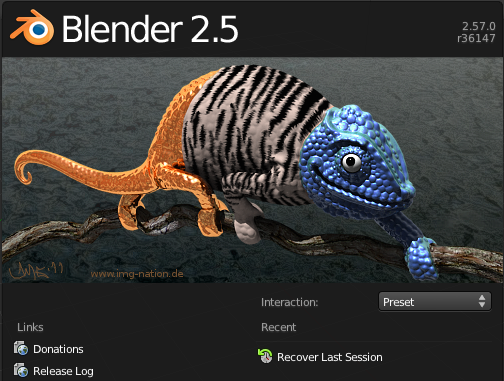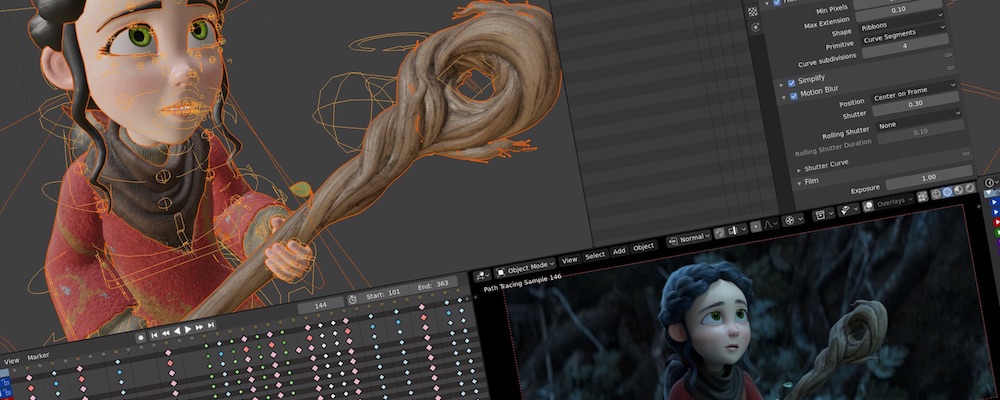

This has already drawn a huge following from the CGI community, where members are already using it to produce jaw-dropping short films. New renderer: EeveeĪnother exciting Blender tool in development is the real-time render engine Eevee.

It would take a weekly article to cover them all and stay up to date. The feature list goes on and on, literally, as new plug-ins and tools are introduced daily. This makes scene-referred workflow a breeze, supports great, intuitive post-processing flexibility and, above all, delivers stunningly photorealistic results.Ī group of stubborn developers and colourists are now determined to turn Cycles into a spectral renderer – a project that’s already reaping promising results. One gigantic step towards photorealism is Troy Sobotka’s Filmic Blender, a high dynamic range transform function with intensity gamut mapping. It’s especially difficult to turn away from Cycles when new features surface on an almost weekly basis, thanks to a developer community made up of professionals from many different industries, all committed to chipping in and pushing it even further. I have tried many, many rendering solutions, but none of them have matched my particular needs. That’s why I would never stray away from Cycles. Pre-filmic era (left with sRGB view transform) and Filmic view transform (right) It’s also worth noting that even current gaming laptops come with desktop-grade graphics cards that can render up to four times faster than their built-in CPUs. Purchasing a couple of graphics cards and just plugging them in can yield results at speeds that were previously only possible in render farms. GPU rendering is faster, easier to scale and more mobile than CPU rendering, especially on a budget. Those involved with developing Cycles have always been strong proponents for GPU rendering – and, as it turns out, they were right. On a personal level, I’ve been a big supporter of Blender Cycles, its RGB ray tracing rendering engine. Thanks to their efforts, Blender has moved beyond a ‘does the job’ mentality often seen in software, in a quest to become ‘the only tool that does the job right.’ They have the ability to look at Blender’s code, with specific jobs in mind, and say, ‘Hey, this can be improved’. These people are frequently experts in sometimes quite niche fields. The list expands constantly, as people from the Blender user community around the world share their knowledge and their workflows. It has already adopted cutting-edge tools that look set to become industry-standard: OpenColorIO for colour management OpenEXR for image storing and the Open Shading Language, OSL. But once you look beyond cost (or lack of cost), what really defines Blender is its modularity, flexibility, fluidity and adaptivity.
#BLENDER 3D REVIEWS SOFTWARE#
The Blender interface has seen some work recently, but there’s still a learning curve for users to conquerĪ free tool that provides a complete 3D pipeline inevitably attracts comparisons to very expensive, proprietary software products that do the same job. (That said, donations and support are highly encouraged, not least to pay the team of 24 full-time professionals working at the Blender Institute to further improve the product).
#BLENDER 3D REVIEWS DOWNLOAD#
Overall stellar stability is now one of the software’s main selling points – or would be, if the product was for sale.Īs with other open source products, it’s free for anyone to download and use. Its brand-new UI is simpler to understand. Most bugs get swatted in pre-release versions. And that message has been heard, loud and clear, by recent corporate recruits to the Blender Development Fund, including Microsoft, Intel, Unity, Nvidia, AMD and EPIC.īig-name supporters aside, the new version 2.9 takes serious steps to make sure Blender is no longer a crazy maze of User Interface (UI) elements, riddled with bugs and cryptic functions. With the mid-2019 release of version 2.8, the Blender Foundation, home of the Blender project, made it clear that Blender means business. That’s down, in part, to Blender’s fast-paced development cycle. In short, it’s a product that professionals across many different industry sectors can’t afford to ignore. They should look a little harder, because this mesh modelling software actually represents a one-stop-shop for a huge range of 3D creation needs: modelling, rigging, animation, simulation, rendering, compositing and motion tracking, video editing and 2D animation. To some people, Blender is just ‘that nerdy little open source application for kids who use Linux’. With Version 2.9, this open source product, which supports a huge range of 3D creation needs, is truly ready for business, writes Mindaugas Petrikas Blender 2.9 – It’s time professionals took Blender seriously.


 0 kommentar(er)
0 kommentar(er)
